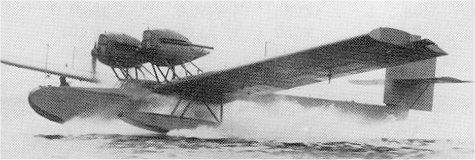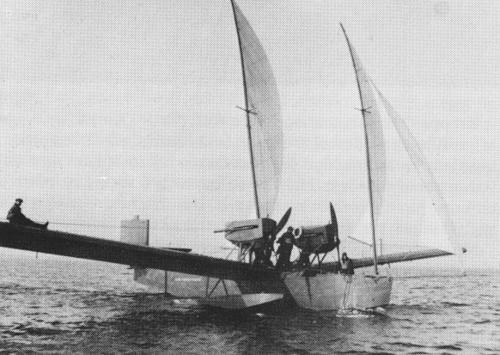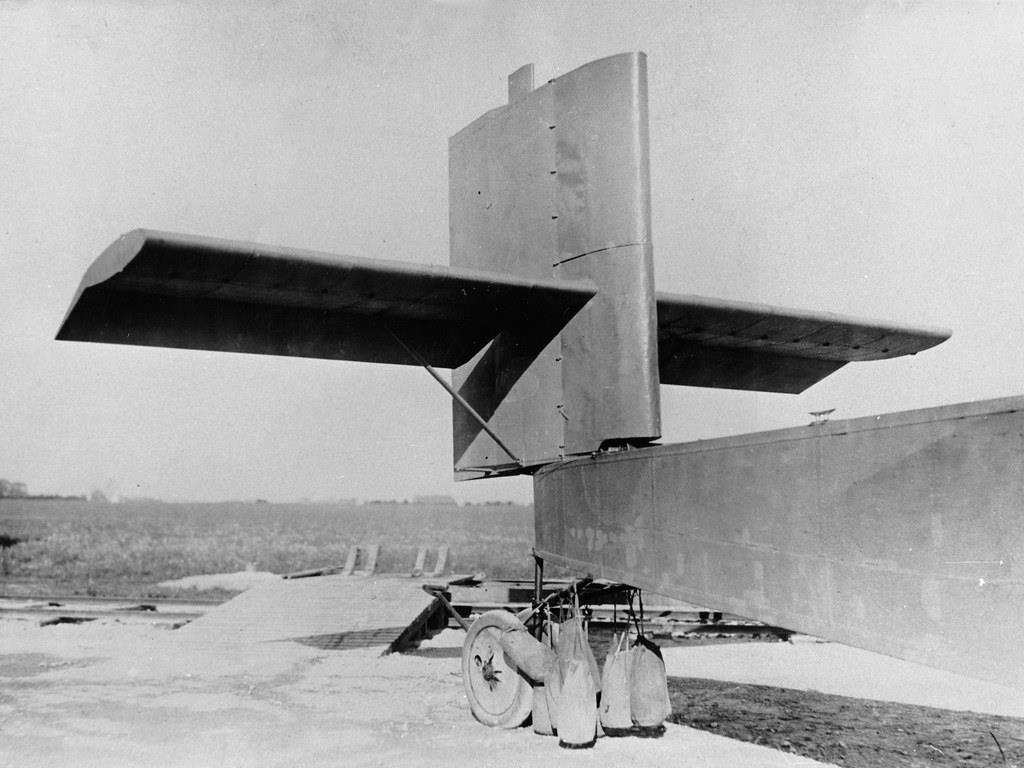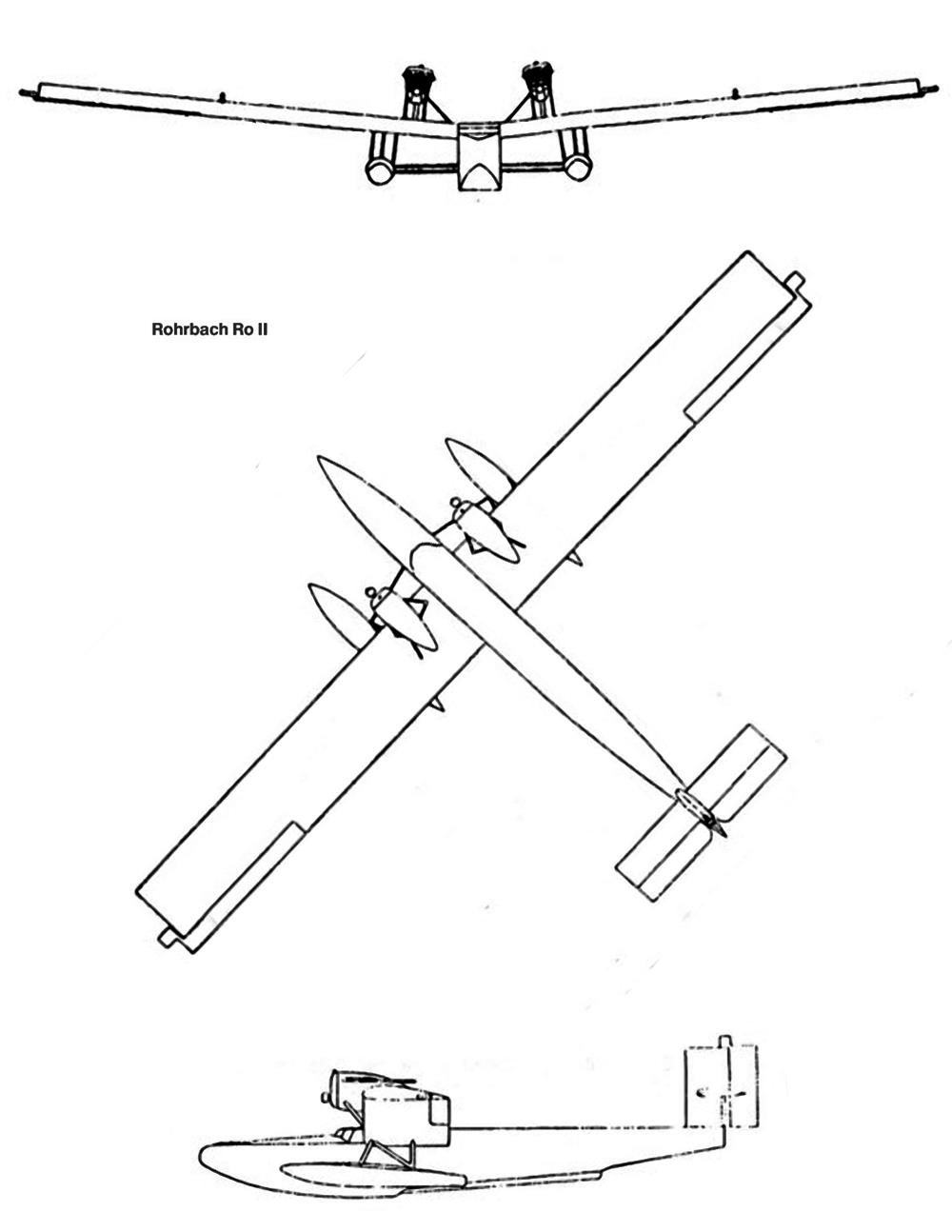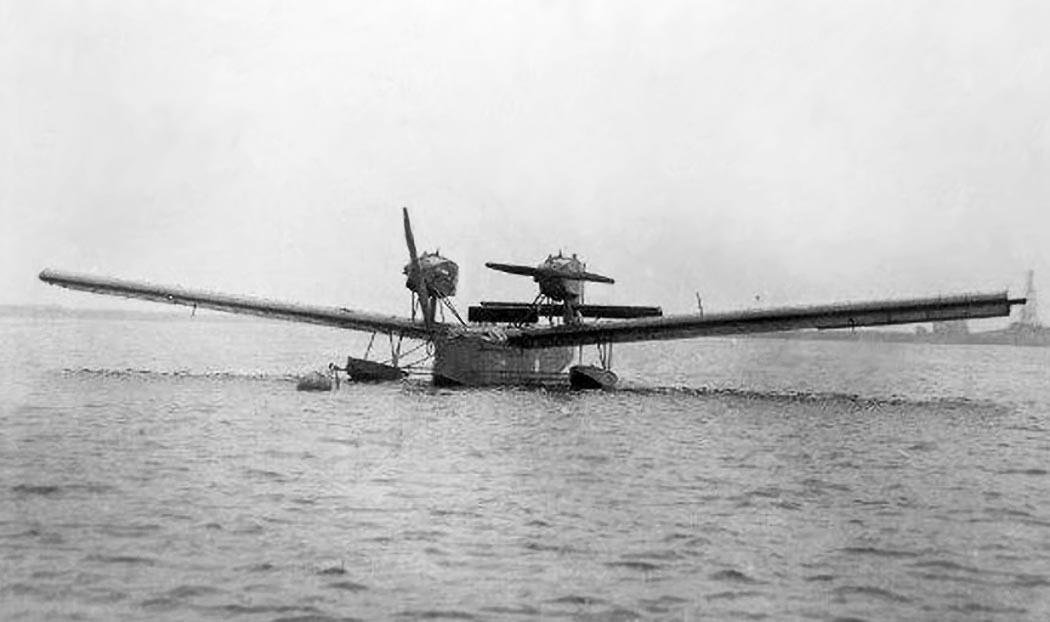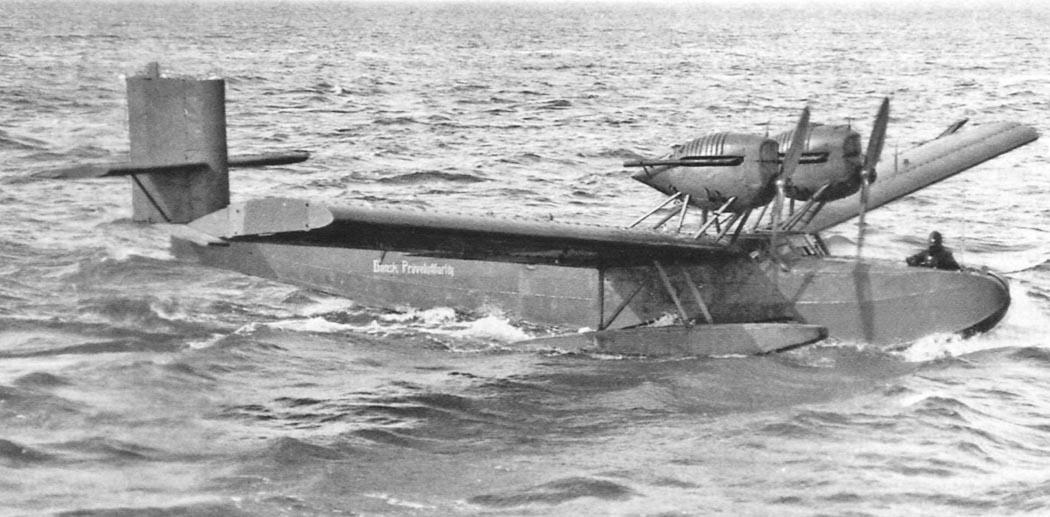After designing the unbuilt 'RoI' twin-engined flying boat. Rohrbach developed the "Rohrbach Ro II' flying boat as an all-metal shoulder-winged monoplane flying boat with two tractor engines mounted in nacelles above the wings on struts. Planforms and profiles were kept as simple as possible with rectangular section fuselage frames (with vee planing bottoms), constant chord wings, tailplane and fin with square-cut tips and distinctive protruding servo/trim/balance tabs at wing and fin tips. The two-seat open cockpit sat between the engines at the wing leading edge, with an open gunner/bosun's position at the extreme nose. A very unusual feature of several of Rohrbach's flying boats was the provision of a pair of masts and sails to be rigged in the event of engine failure to allow the aircraft to be sailed back to safety
At the time of the Ro II's production the Versailles Treaty forbade the construction of large aircraft in Germany so Rohrbach set up a Danish company, the 'Rohrbach-Metall-Aeroplan Co. A/S', to build the early Rohrbach aircraft. The strict regulation of the aircraft industry was relaxed in 1926 allowing the Rohrbach series to be built at the Rohrbach Metall-Flugzeugbau GmbH factory in Berlin
The first flight of the Ro II took place on 11 November 1923, piloted by Werner Landmann and the aircraft was used in FAI record attempts for speed/load on 24 October 1924. After trials and record attempts were completed the aircraft was sold to Mitsubishi Shoji Kaisha Ltd.. Variations on the Rohrbach Ro II theme were produced by modifying the design and fitting different engines;The aircraft produced by the Yokosuka Naval Arsenal was designated Yokosho Experimental Type R-1, Mitsubishi's effort was designated Mitsubishi Experimental Type R Flying-boat (aka Mitsubishi R-2) and Hiro Naval Arsenals aircraft was designated Hiro Experimental R-3 Flying-boat. All three aircraft were used for trials by the Imperial Japanese Navy, but production was not carried out
| Type |
4 seat reconnaissance and bomber flying boat with a crew of 4 (Gunner, pilot, mechanic, radio-operator) |
| Engine |
2 Rolls-Royce Eagle IX |
| Dimensions |
Length 16.50 m, height 5.00 , span 27.00 m, wing area 73.40 m2 |
| Weights |
Empty 3700 kg, load 2000 kg, flying weight 5700 kg |
| Performance |
Max. speed 165 km/h, landing speed 110 km/h, service ceiling 3000 m |
| Type |
Werk.Nr |
Registration |
History |
| Ro II |
1 |
|
First flight 11th of November 1923 (Pilot Werner Landmann). Used for FAI-records in speed/load category on the 24th of October 1924. Bought by the Mitsubishi Shoji Kaisha Ltd. and after trials delivered to Japan, known as the Yokosho Experimental Type R 1. Used by the Japanese naval aviation for trials. |
|
2 |
|
Mitsubishi Experimental Type R.2. A second Rohrbach Ro II imported into Japan and completed by Mitsubishi
Hiro Experimental R-3 Flying-boat. A third Ro II built by the Hiro Naval Arsenal, with detail design improvements and 450hp Hiro-built Lorraine 2 engines |
